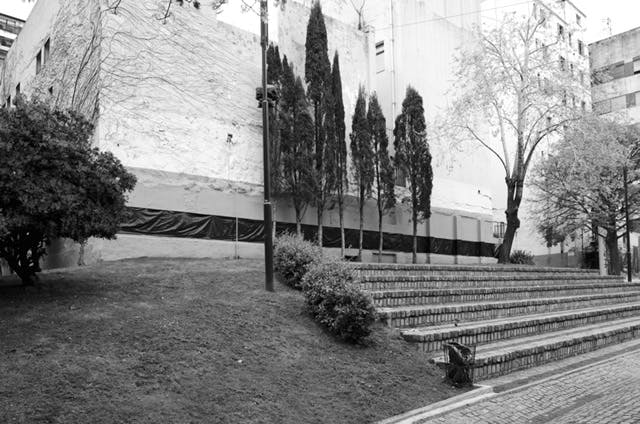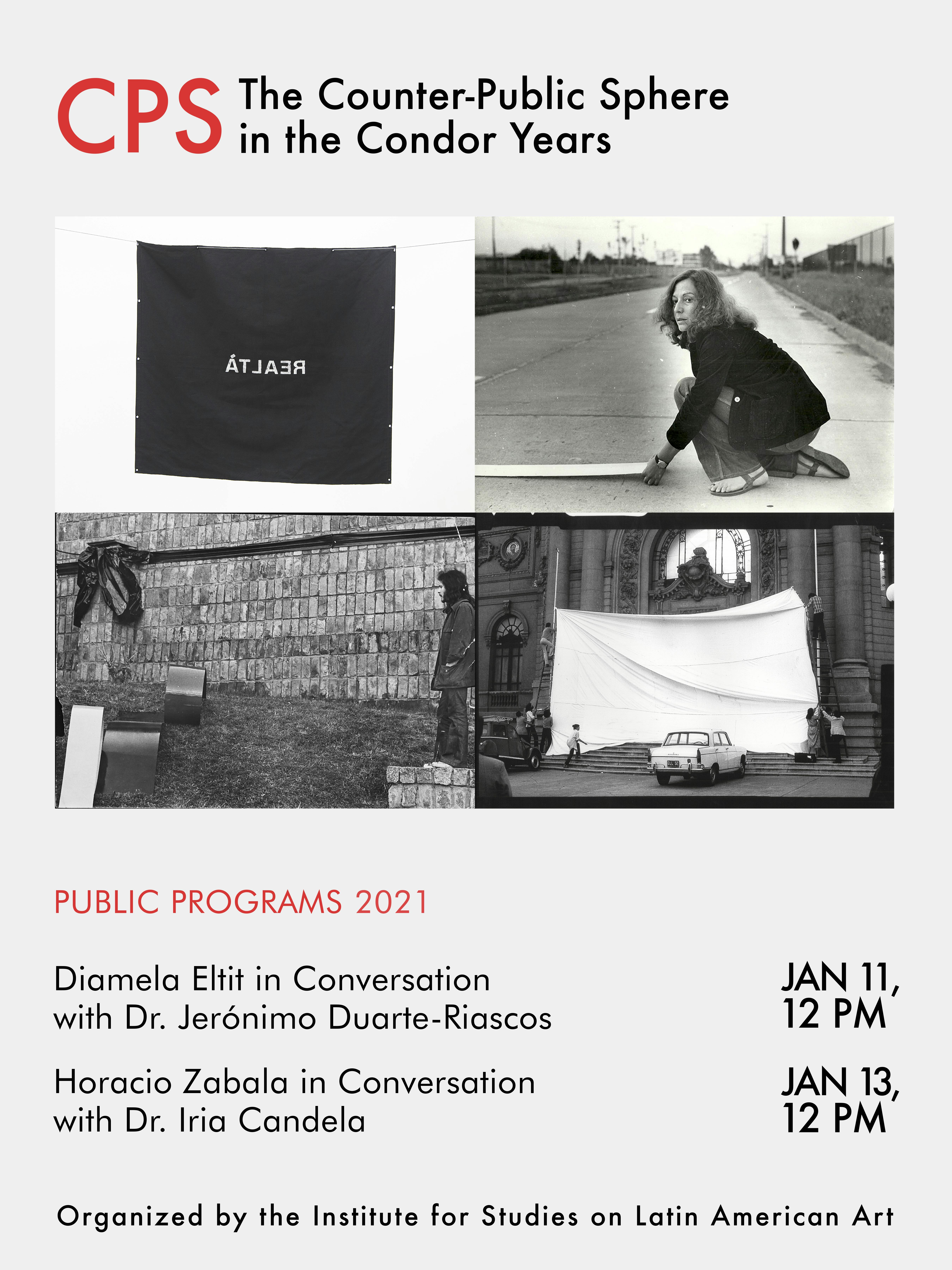Horacio Zabala in Conversation with Iria Candela

How can artists express dissent under repressive political regimes that punish protests with violence or worse?
To mark the final week of the exhibition The Counter-Public Sphere in the Condor Years, closing January 15, 2021, the Institute for Studies on Latin American Art (ISLAA) hosted live online events with two of the featured artists. In separate conversations with art historians, Chilean writer and artist Diamela Eltit and Argentine artist and architect Horacio Zabala shared first-hand accounts of producing contestatory public art under the oppressive conditions of the “Condor Years,” defined by US-backed military dictatorships in Cold War–era South America.
Eltit and Zabala are pivotal figures of Latin American art who adopted strategies from theater to mount allusive yet highly visible acts of mourning, anger, and solidarity. Their poetic and open-ended gestures constituted nothing less than erosions of authoritarian control, as exemplified by Eltit’s actions with the group CADA (Colectivo Acciones de Arte) and Zabala’s public installations.
Guest discussants will lend their historical expertise to these conversations: Jerónimo Duarte-Riascos, assistant professor in the Department of Latin American and Iberian Cultures at Columbia University, will accompany Eltit in dialogue. Zabala will be joined by Iria Candela, Estrellita B. Brodsky Curator of Latin American Art at the Metropolitan Museum of Art.
These conversations were conducted in Spanish. Read the translated transcription in English here.
